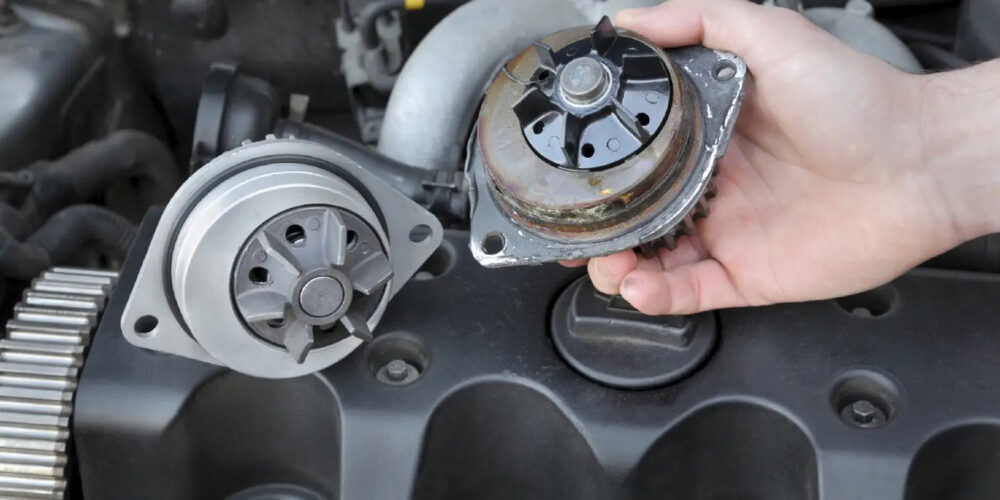Hydraulic power steering has been standard equipment on most vehicles for the past several decades. Rack and pinion steering usually needs power assist because it feels stiff and heavy without it. In recent years, electric power assisted steering is replacing hydraulics. Electric steering uses no fluids so there are no hoses, no pump, no leaks and no maintenance. Also, power comes from the battery and charging system rather than a belt-driven pump, so electric steering requires less horsepower from the engine (for a slight gain in fuel economy and performance).
With hydraulic steering, the pump is the heart of the system. As the pump turns, it displaces fluid and generates pressure that flows though a discharge hose to the steering gear. Control valves inside the steering housing regulate how the pressure is routed to provide power assisted steering. The extra push provided by the pressurized fluid reduces steering effort, which makes turning much easier at low speeds and when parking. Less steering assist is needed at higher speeds, so many “variable assist” PS systems have a solenoid that reduces assist and increases effort as the vehicle’s speed increases.
On older vehicles with “Hydroboost” power brakes, fluid pressure from the PS pump also is used to provide power-assisted braking. On some import applications, fluid from the PS pump may even be used to drive the radiator cooling fan. Power steering pumps are fairly reliable, but like any mechanical device they suffer wear over time. The pump vanes, bushings and seals and wear, resulting in noise, reduced steering assist and leaks. A loud squealing noise when turning at low speed is usually a slipping belt, not a bad pump. Air in the fluid can also make a pump noisy. But a steady whine, moan or growl usually indicates a failing pump. Reduced power assist, especially when a cold vehicle is first started, usually indicates wear in the control valves in the steering unit, not a bad pump.
Leaks can occur anywhere in the system, including the discharge and return hoses, the pump shaft seal and the steering gear. If the pump is leaking, it needs to be replaced.
The PS pump is usually mounted on the front of the engine, and is relatively simple to replace on most applications (though access may be limited with many transverse-mounted V6 engines). Regardless of mileage, the old fluid should always be drained from the system and replaced with new. The additives and corrosion inhibitors in old fluid is often depleted, and the fluid may contain dirt and abrasives that could damage the new pump. Most new and remanufactured power steering pump warranties require the fluid to be changed. Any leaks also should be repaired at this time.
On high-mileage vehicles, both PS hoses should also be replaced along with the drive belt. On engines with serpentine belts, the automatic tension also should be inspected to make sure it is working properly and capable of maintaining proper belt tension (if not, it also needs to be replaced).
The type of PS fluid that is required will vary with the application. Using a fluid that does not meet the OEM requirements may cause problems or failures, so always refer to the PS fluid requirements in the owner’s manual or service literature.










